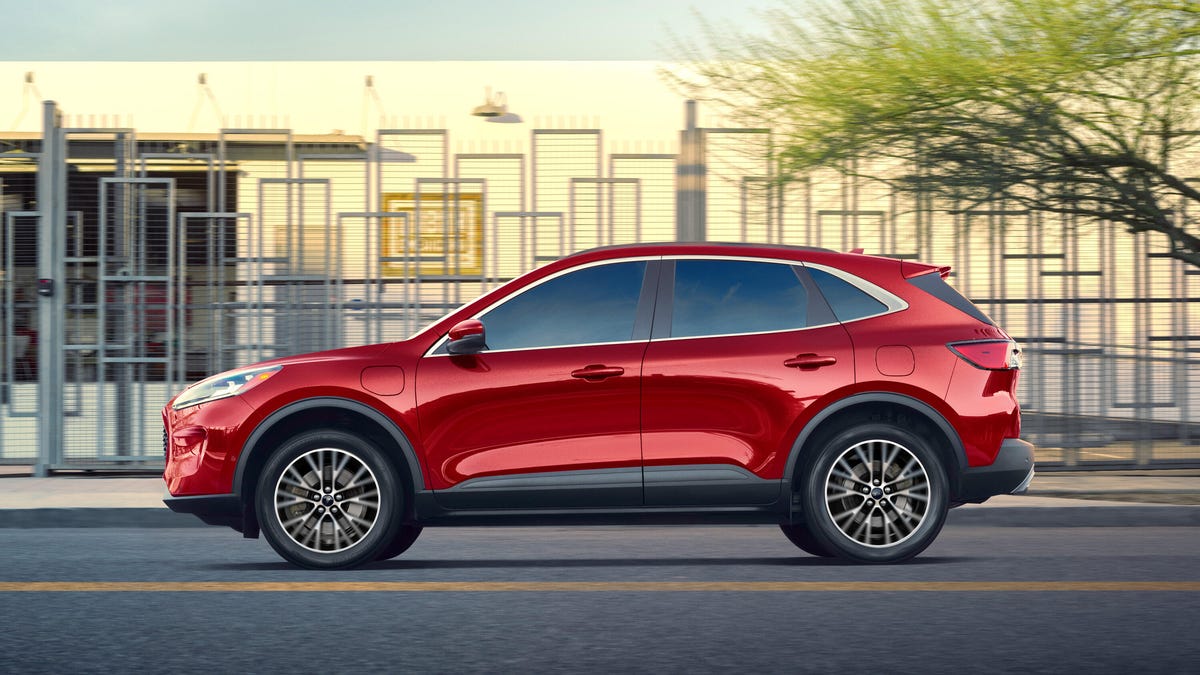2020 Ford Escape Plug-in Hybrid promises 37 miles per charge, 100 mpge
The Escape PHEV is a smidge more efficient than its closest corded competitors from Toyota, Subaru and Mitsubishi.
Gas-electric hybrid crossovers ? Pfft! That's old hat, man. Wanna know what the new hotness is? Plug-in hybrid crossovers. Toyota's got one on the way, as does Ford , and the latter just released some seriously impressive fuel-economy figures.
Ford announced on Monday that the 2020 Ford Escape Plug-in Hybrid has received an EPA-estimated fuel economy rating of 100 miles per gallon equivalent, putting the crossover at the top of its class. For those unfamiliar with the term, mpge are how the EPA measures alternative-fuel vehicle consumption against traditional gas cars and the standard mpg rating.
You can dig into the math in your spare time if you like, but what matters here is context -- to that end, the Escape PHEV beats the upcoming Toyota RAV4 Prime by 6 mpge. Then again, the RAV4 Prime will also be Toyota's most powerful RAV4 variant with a net 302 horsepower heading to all four wheels, while the Escape PHEV will make do with just 165 hp and front-wheel drive, so it's clear the two vehicles are on slightly different trajectories despite existing in the same segment.
That's not the only bit of news, though. The EPA also gave Ford its estimate for the Escape PHEV's electric-only range. At 37 miles on a full battery, that's almost a dozen more than what the Fusion Energi PHEV could muster prior to its cancellation, and it's just a couple of miles ahead of Toyota's internal estimates for the RAV4 Prime (official figures are not yet available on the EPA's website).
Now, that battery's got to go somewhere, and in the Escape's case, it ends up eating into cargo space but not by much. Ford's website lists the Escape PHEV as offering 60.8 cubic feet of storage behind the first row and 34.4 cubes behind the second row, which is about 3 to 5 cubic feet less than what you get in the standard gas Escape. That 14.4-kilowatt-hour battery will take 3.3 hours to fill on a 240-volt Level 2 charger, extending to 10 or 11 hours on a normal three-prong outlet.
The 2020 Ford Escape Plug-in Hybrid slides in under $35,000 including destination, although posher trims push it up toward $40,000, and it should be on sale soon.


